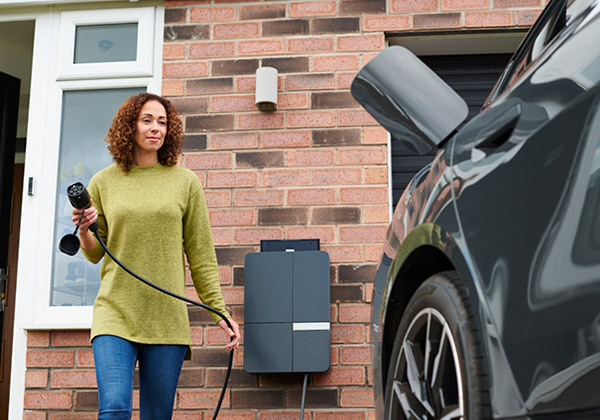Next steps agreed for on-site residential battery storage standards for Australia
Statements
Yesterday, Standards Australia’s Chief Executive Dr Bronwyn Evans brought together a group of senior industry and government leaders to discuss the introduction of residential on-site battery storage standards in Australia.
Broad agreement was reached on a way forward that will see Standards Australia, industry and government working together to fast track the development and adoption of appropriate product safety standards. Once implemented, these standards will enable the continued roll out of residential onsite battery systems, empower customer choice and meet community safety expectations.
The agreed standards framework includes the expected adoption of product standards developed by the IEC and UL, two leading developers of standards for battery products to complement the installation standard already in development by the Australian standards committee.
Standards Australia is committed to fast-tracking these projects over the next three months.
Roundtable attendees acknowledged the substantial work already undertaken by the Standards Australia technical committee, together with the importance of the development of an Industry best practice guide being facilitated by the Electrical Safety Office of the Queensland Government, to support safe installation of battery systems.
Additionally, it was agreed that provisions contained in the draft installation standard related to residential building regulation, beyond product placement will be removed. Instead, industry and government will work together to develop appropriate building requirements that recognise current installation practices for battery systems that meet the international product standards. These changes will be subject to further community consultation.
Dr Evans commented, “At the start of the meeting today, I asked the question ‘Are standards needed at all?’ I was pleased that there is unquestionable support for standards, developed by the right people, in the right way.
“There was unanimous agreement in the room of the need to both encourage the uptake of new technology and manage community safety expectations. The clear path forward set today will see us working hard and working together to get the relevant standards in place as soon as we can.”
The roundtable agreed to meet again as the work progresses to ensure the broad support and alignment remains. Standards Australia will keep stakeholders informed of progress in the development of the documents, and stakeholders will be invited to submit comments during further rounds of consultation.
SUMMARY OUTCOMES
1. Standards Australia’s technical committee will commence resolving the comments received on DR AS/NZS 5139 on the understanding that:
- Building requirements are removed from the draft
- Placement/location requirements are relevant in an installation standard and these parts will be redrafted noting the development and adoption of relevant product standards in Australia
- The draft will be released for a second round of public comment
2. Subject to the usual standards development process and licensing arrangements as required, Standards Australia will fast track consideration of the adoption in Australia of relevant standards:
- IEC 62619:2017 Secondary cells and batteries containing alkaline or other nonacid electrolytes - Safety requirements for secondary lithium cells and batteries, for use in industrial applications (this project has already been kicked-off)
- UL 1973 Standard for Batteries for Use in Light Electric Rail (LER) Applications and Stationary Applications
3. Attendees noted the Queensland Electrical Safety Office is facilitating the development of an Industry best practice guide applicable to integrated energy storage system products and endorsed this work as an adjunct to the international adoptions.
Organisations Represented at the Roundtable
- AGL
- Australasian Fire and Emergency Service Authorities Council
- Australian Building Codes Board
- Australian Industry Group
- Clean Energy Council
- Department of the Environment and Energy
- Electrical Regulatory Authorities Council
- Electrical Trades Union of Australia
- Energy Networks Australia
- Housing Industry Association
- NSW Fair Trading
- Origin Energy
- Qld Department of Energy and Water Supply
- South Australian Technical Regulator (by teleconference)
- Standards New Zealand (by teleconference)
- Tesla
- WorkSafe NZ (by teleconference)
Yesterday, Standards Australia’s Chief Executive Dr Bronwyn Evans brought together a group of senior industry and government leaders to discuss the introduction of residential on-site battery storage standards in Australia.
Broad agreement was reached on a way forward that will see Standards Australia, industry and government working together to fast track the development and adoption of appropriate product safety standards. Once implemented, these standards will enable the continued roll out of residential onsite battery systems, empower customer choice and meet community safety expectations.
The agreed standards framework includes the expected adoption of product standards developed by the IEC and UL, two leading developers of standards for battery products to complement the installation standard already in development by the Australian standards committee.
Standards Australia is committed to fast-tracking these projects over the next three months.
Roundtable attendees acknowledged the substantial work already undertaken by the Standards Australia technical committee, together with the importance of the development of an Industry best practice guide being facilitated by the Electrical Safety Office of the Queensland Government, to support safe installation of battery systems.
Additionally, it was agreed that provisions contained in the draft installation standard related to residential building regulation, beyond product placement will be removed. Instead, industry and government will work together to develop appropriate building requirements that recognise current installation practices for battery systems that meet the international product standards. These changes will be subject to further community consultation.
Dr Evans commented, “At the start of the meeting today, I asked the question ‘Are standards needed at all?’ I was pleased that there is unquestionable support for standards, developed by the right people, in the right way.
“There was unanimous agreement in the room of the need to both encourage the uptake of new technology and manage community safety expectations. The clear path forward set today will see us working hard and working together to get the relevant standards in place as soon as we can.”
The roundtable agreed to meet again as the work progresses to ensure the broad support and alignment remains. Standards Australia will keep stakeholders informed of progress in the development of the documents, and stakeholders will be invited to submit comments during further rounds of consultation.
SUMMARY OUTCOMES
1. Standards Australia’s technical committee will commence resolving the comments received on DR AS/NZS 5139 on the understanding that:
- Building requirements are removed from the draft
- Placement/location requirements are relevant in an installation standard and these parts will be redrafted noting the development and adoption of relevant product standards in Australia
- The draft will be released for a second round of public comment
2. Subject to the usual standards development process and licensing arrangements as required, Standards Australia will fast track consideration of the adoption in Australia of relevant standards:
- IEC 62619:2017 Secondary cells and batteries containing alkaline or other nonacid electrolytes - Safety requirements for secondary lithium cells and batteries, for use in industrial applications (this project has already been kicked-off)
- UL 1973 Standard for Batteries for Use in Light Electric Rail (LER) Applications and Stationary Applications
3. Attendees noted the Queensland Electrical Safety Office is facilitating the development of an Industry best practice guide applicable to integrated energy storage system products and endorsed this work as an adjunct to the international adoptions.
Organisations Represented at the Roundtable
- AGL
- Australasian Fire and Emergency Service Authorities Council
- Australian Building Codes Board
- Australian Industry Group
- Clean Energy Council
- Department of the Environment and Energy
- Electrical Regulatory Authorities Council
- Electrical Trades Union of Australia
- Energy Networks Australia
- Housing Industry Association
- NSW Fair Trading
- Origin Energy
- Qld Department of Energy and Water Supply
- South Australian Technical Regulator (by teleconference)
- Standards New Zealand (by teleconference)
- Tesla
- WorkSafe NZ (by teleconference)

Email:

Email:


